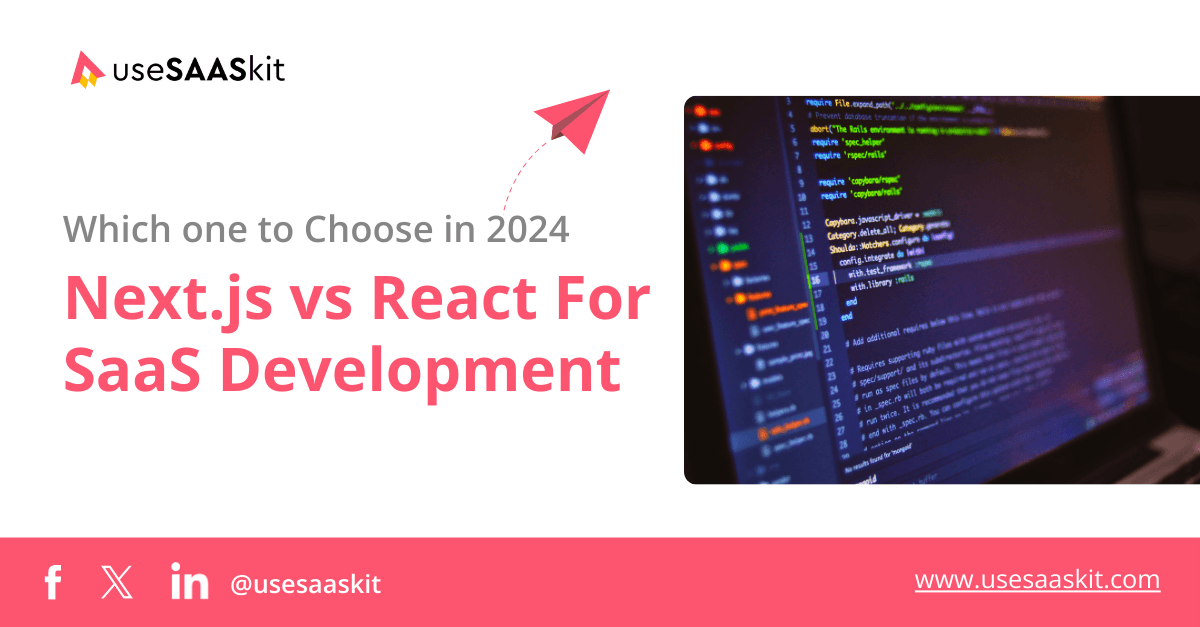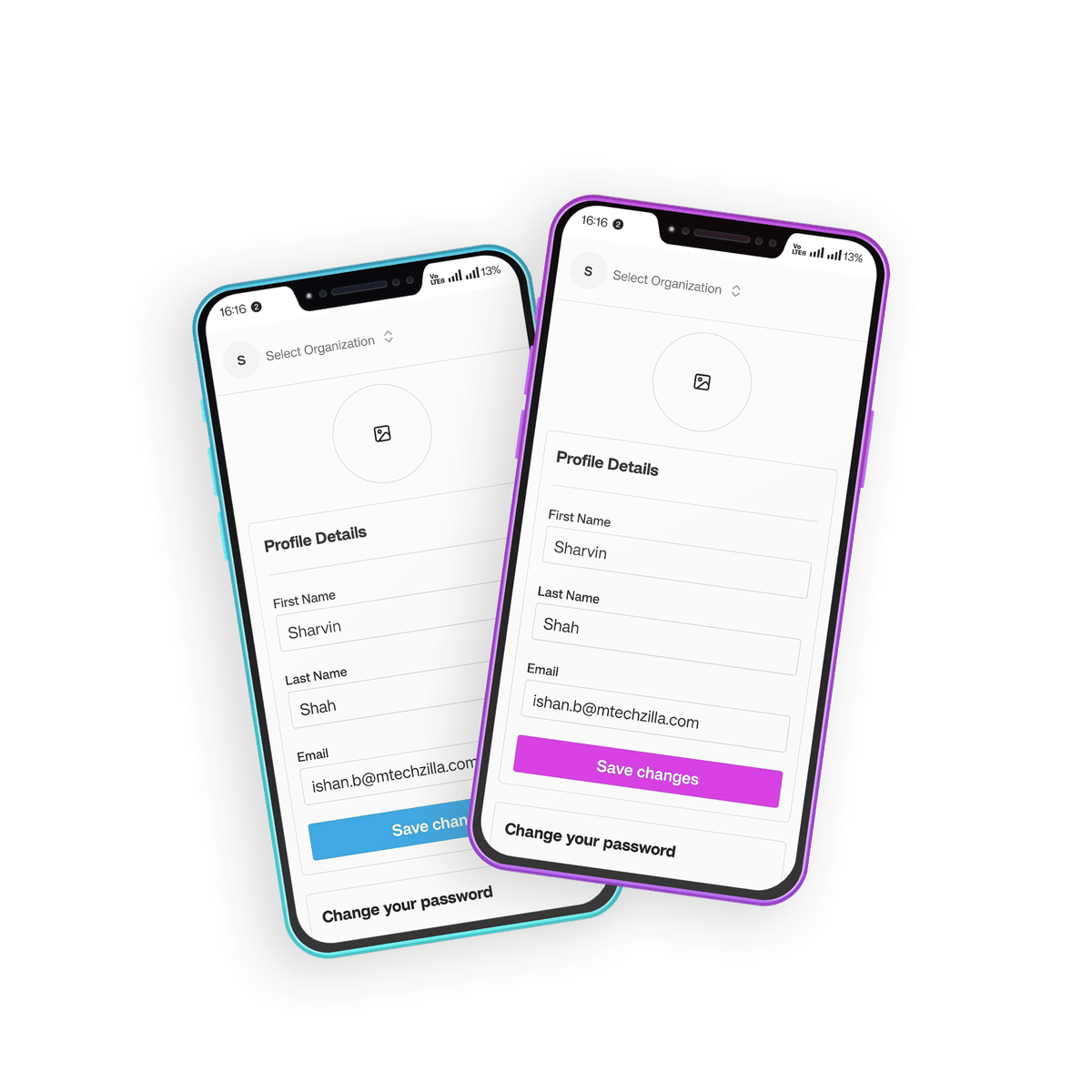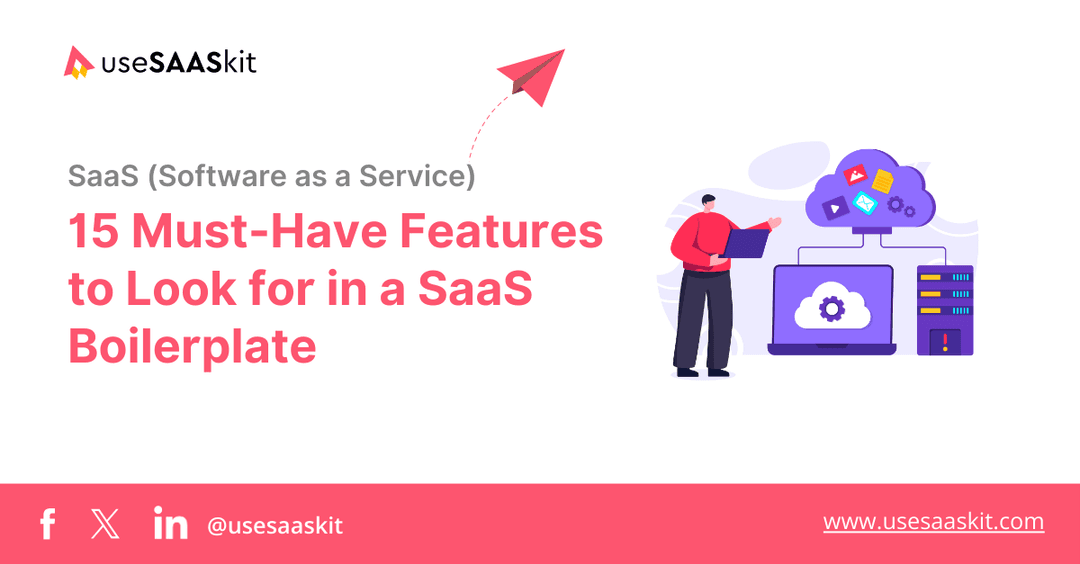Tuesday, 24 Sep 2024
9 min read
Next.js vs React for SaaS Development: Which one to Choose?

As developers and SaaS builders, you understand that the success of a SaaS product starts with choosing the right technology. The framework or library you select can significantly impact performance, scalability, and the overall user experience of your application. Two popular options you’ll often hear about are Next.js and React.
Both tools are widely used, but how do you determine which one is the best fit for your SaaS project? One critical factor to consider is developer experience—how easy and efficient it is for you to work with a particular technology. The best frameworks are user-friendly, enabling you to focus on building features rather than grappling with complicated setups.
Before starting the software development process, one of the most significant decisions you’ll make is choosing the right platform. Many developers find it challenging to differentiate between React and Next.js, mainly due to the numerous options available in the tech world. This confusion makes selecting the best technology stack for your SaaS project more difficult.
By the end of this blog, you’ll gain a clearer understanding of which framework or library will suit your SaaS development needs in 2024. Let’s dive in!
Table of Contents
- What is Next.js and What is it Used For?
- What is React and What is it Used For?
- Popular Examples of Sites Using Next.js and React
- Key Factors to Consider for SaaS Development
- Key Differences Between Next.js and React
- When to Choose Next.js and React
- Which One to Choose in 2024 for SaaS Development?
- Frequently Asked Questions
What is Next.js and What is it Used For?
Next.js is an open-source framework built on top of React. It provides additional features that simplify building server-rendered and static web applications. Developed by Vercel, Next.js allows developers to create faster, more efficient web apps.
Next.js is used for:
- Server-Side Rendering (SSR): Renders pages on the server before sending them to the client, improving loading times and SEO. Example: An e-commerce site can use SSR to quickly render product pages, ensuring users see content immediately without waiting for the full page to load.
- Static Site Generation (SSG): Pre-renders pages at build time for faster loading.
Example: A blog can use SSG to generate static pages for each article, allowing visitors to access content quickly, even under heavy traffic. - App Router: The new App Router feature in Next.js organizes web pages, enabling layouts within layouts and smoother page loads without full-page refreshes.
- Server Components: These are parts of your website that run on the server instead of the user’s browser. This helps with faster page rendering and increased security.
- File-based Routing: Automatically manages routes based on file structure, simplifying navigation.
- Automatic Code Splitting: Loads only the necessary JavaScript for each page, enhancing performance.
- API Routes: Allows you to create API endpoints directly within your project for more streamlined development.
In summary, Next.js simplifies web development while helping developers build high-performance applications efficiently.
What is React and What is it Used For?
React is an open-source JavaScript library created and maintained by Facebook. It is commonly used to build user interfaces, particularly for Single-Page Applications (SPAs). React allows developers to build large web applications where data can change without requiring the entire page to reload, resulting in a smoother and more interactive user experience.
React is used for:
- Building User Interfaces: React is ideal for creating dynamic and interactive user interfaces, like those found in social media sites or dashboards. Example: Facebook uses React to build its user interface, allowing users to interact with posts, comments, and likes smoothly.
- Single-Page Applications (SPAs): React is perfect for SPAs, where the content changes dynamically without requiring the entire page to reload. Example: Applications like Gmail or Trello use React to provide a seamless experience when navigating between different sections without full page refreshes.
- Mobile Applications: React Native, a framework based on React, allows developers to build mobile applications for iOS and Android using the same concepts. Example: The Instagram app is built using React Native, providing a consistent experience across devices.
Popular Examples of Sites Using Next.js and React
Next.js and React power many high-traffic websites. Here are some well-known examples.
Examples of Sites Using Next.js:
- Vercel: The creators of Next.js use it for their website.
- Twitch: Uses Next.js to power their web-based services.
- Netflix: Next.js supports the smooth streaming experience of Netflix's website.
Examples of Sites Using React:
- Facebook: The social media giant behind React uses it across their web and mobile platforms.
- Instagram: React enhances Instagram's web platform for seamless user interaction.
- Airbnb: Uses React to create a dynamic and complex user interface.
Key Factors to Consider for SaaS Development
When choosing a front-end framework for your SaaS application, it's important to think about several key factors. Both Next.js and React can help you, but they approach these factors differently. Here are the main things to consider:
Important Considerations:
- Scalability: Can the framework handle a growing user base and data complexity?
- SEO: How important is search engine visibility for your SaaS product?
- Performance: Is speed and load time a critical factor for your users?
- Developer Experience: Is the framework easy and enjoyable for your development team to work with?
- Development speed: How quickly can you iterate and launch features?
- Maintenance: Will your development team find it easy to maintain the codebase?
Considering these factors, Next.js often wins for SaaS platforms that prioritize SEO and performance.
Key Differences Between Next.js and React
When you work on web development, you might hear about React and Next.js. Both are popular tools, but they serve different purposes and have their own strengths and weaknesses.

1. Rendering
Next.js: Offers multiple rendering options out of the box, including Server-Side Rendering (SSR), Static Site Generation (SSG), and Incremental Static Regeneration (ISR). Also Next.js 14 introduces the App Router, a new routing system that improves performance and makes building complex apps easier. It offers features like nested layouts, better data fetching and faster page navigation.
Example: An online store can use SSR to show the latest products immediately, while a blog can use SSG to pre-generate articles for fast loading. App Router can be used for more complex routing scenarios, such as nested layouts or dynamic routes.
React: Does not support server-side rendering by default. If you want SSR, you need to use additional tools like Next.js or Gatsby. If you only use React, your web app will load all content on the client side, which may take longer and can affect SEO.
2. Routing
Next.js: Next.js uses a file-based routing system. Just create a file in the pages folder, and Next.js will automatically generate a route for it. For example, creating a file called contact.js makes it available at /contact. With Next.js 14's App Router, you get more flexibility for complex setups like nested layouts and dynamic routes.
React: Requires manual configuration of routes using libraries like React Router. This can add complexity to your project. Example: In a React app, you would need to set up routes separately, which involves more coding and management.
3. Performance
Next.js: Comes with built-in features like automatic code splitting and optimised image handling. The Next.js App Router and Server Components improve performance by reducing the JavaScript sent to the client and making data fetching more efficient. This means only the necessary code for each page is loaded, improving performance. Example: If your application has multiple pages, Next.js only loads the code needed for the page you're on, making it faster.
React: While powerful, React requires additional optimisation techniques through third-party libraries to achieve similar performance benefits. Example: You might need to implement code splitting and image optimisation manually, which can be time-consuming.
4. SEO
Next.js: Has superior SEO capabilities thanks to server-side rendering. This allows search engines to index your pages more effectively. Example: A news website using Next.js can ensure that articles are easily discoverable by search engines, improving visibility.
React: Less SEO-friendly by itself, unless combined with server-side rendering frameworks like Next.js. Example: If you build a site with just React, search engines may struggle to find your content, making it harder for users to discover your site.
5. Building Production-Ready Apps
Next.js: Provides practical tutorials that guide you through creating components and integrating features. You simply place your pages in the pages folder. Example: This makes setting up your application straightforward.
React: Offers extensive resources, but you need to define routes and set them up manually. Example: Using Create React App (CRA) simplifies development by quickly setting up single-page applications without complex configurations.
6. Developer Community
React: A strong developer community is crucial for support and learning. React has a larger and more active community, which means you can find plenty of solutions to problems through blogs, tutorials, and forums like Stack Overflow. This vast community also means more libraries and tools available for developers to enhance their projects.
Next.js: On the other hand, Next.js has a smaller but rapidly growing community. Developers can find support on platforms like GitHub, where discussions and solutions are becoming more common. Both frameworks provide a positive developer experience, though React offers a broader base of shared knowledge.
7. Configuration
React: Offers flexibility, allowing for extensive customization but can be overwhelming for beginners. If you use the standard CRA setup, you may find it limiting.
Next.js: Provides a more structured environment that allows for straightforward configuration. You can easily adjust settings for tools like Babel and ESLint, tailoring your development experience to fit your needs without excessive complexity. This makes Next.js a more appealing option for those who prefer a clear and organised setup.
8. Maintenance
Both frameworks: Are well-maintained and regularly updated. Keeping up with these updates is vital to ensuring the quality and security of your projects. Next.js frequently releases new features and performance improvements, while React also continues to evolve with community feedback.
Regular updates from both frameworks help developers avoid potential issues and ensure their applications remain compatible with the latest web standards. This commitment to maintenance is important for long-term project viability.
9. Development Cost
Both Next.js and React: Are open-source frameworks, which means they can be used without incurring licensing fees. This makes them accessible for developers and businesses of all sizes. However, while the frameworks themselves are free, it's important to consider the total development cost, including the time spent on learning, building, and maintaining applications.
If your team is already familiar with React, integrating Next.js might have a minimal learning curve, potentially saving time and resources in the long run. Overall, both frameworks offer a cost-effective solution for building modern web applications.
10. TypeScript Support
Both Next.js and React work well with TypeScript, which helps developers catch mistakes and write better code. Next.js makes it easy to start a TypeScript project, so you can get going quickly. React also supports TypeScript through Create React App (CRA) with a TypeScript template.
Next.js is great for SaaS apps that need good SEO, fast loading times, and quick updates. On the other hand, React is perfect for building interactive and dynamic user interfaces. This means you can choose the best framework based on what your project needs.
When to Choose Next.js and React
Choose Next.js if:
- When SEO is critical to your business.
- When you need fast-loading pages, especially for content-heavy applications.
- When you want a built-in solution for routing, rendering, and performance.
- You want a simplified development experience.
- You need to scale your SaaS application to handle large user bases.
- You want to leverage server-side rendering (SSR) for better performance and user experience.
- You need easier server-side logic integration, thanks to built-in middleware support.
Choose React if:
- When building highly interactive, single-page applications (SPAs).
- When performance and SEO are less of a concern.
- When your team has deep experience with the React ecosystem.
- You require advanced customisation and flexibility.
Which One to Choose in 2024 for SaaS Development?
If you're building a SaaS tool, where users need fast access to personalised dashboards, Next.js is ideal because its server-side rendering can load data quickly, improving user experience. However, for simpler apps like a note-taking tool or task management system where SEO isn't critical, React can efficiently handle the front-end with client-side rendering.
For internal tools, like an inventory management system, React's simplicity is often enough. Startups creating a prototype might begin with React for speed and later switch to Next.js as the app grows and demands more performance.
In summary:
- Choose Next.js if you need SEO, server-side rendering, or are building a large, dynamic SaaS platform and want to benefit from the App Router and Server Components for improved performance and developer experience.
- Choose React if you're building a lightweight SaaS app or a single-page application with minimal SEO requirements.
Frequently Asked Questions
What is the fastest way to build a SaaS product?
The quickest way to build a SaaS product is by using a pre-configured template like useSAASkit's Next.js Supabase SaaS template. It includes everything you need, such as Next.js, Supabase, Stripe and Tailwind CSS. Since these tools are already set up, you can save a lot of time and launch your SaaS in just one week instead of taking a month.
What technologies are best for building a SaaS application?
Popular technologies for building SaaS applications include Next.js for front-end development, Supabase for databases, Stripe for payment processing, and Tailwind CSS for efficient styling.
How can I optimize SaaS pricing?
You can use our free tool, the SaaS Pricing Generator, to figure out the best pricing structure for your SaaS product. Our SaaS pricing calculator generates three pricing plans that align with your features, target users, and market demand.



